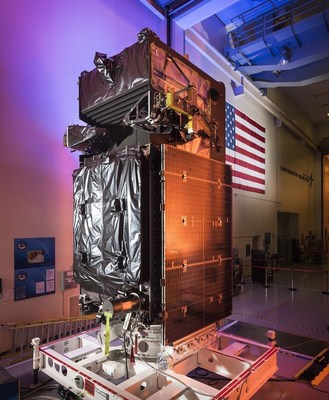The U.S. Air Force and Lockheed Martin (NYSE: LMT) delivered the next Space Based Infrared System (SBIRS) Geosynchronous Earth Orbit (GEO) satellite to Cape Canaveral Air Force Station on Aug. 2, ahead of its October launch.

SBIRS includes a combination of satellites in GEO orbit, hosted payloads in Highly Elliptical Orbit (HEO), and ground hardware and software. The data provided by SBIRS enhances the military’s ability to detect missile launches, supports ballistic missile defense, expands technical intelligence gathering, and bolsters situational awareness on the battlefield.
“SBIRS GEO satellites are our nation’s missile warning sentinels and are critical assets to the U.S. military’s continually evolving mission,” said David Sheridan, vice president of Lockheed Martin’s Overhead Persistent Infrared systems mission area. “With GEO Flight 3’s successful testing and delivery to the launch site, we’re expanding the military’s ability to receive timely, reliable and accurate missile warning and infrared surveillance information.”Lockheed Martin manufactured SBIRS GEO Flight 3 at its Sunnyvale, California, facility. For its trip to Florida, the satellite was loaded aboard a C-5 Galaxy aircraft at nearby Moffett Federal Air Field. It will launch aboard a United Launch Alliance Atlas V rocket.
The next SBIRS satellite, GEO Flight 4, is in storage and will undergo final assembly, integration and test operations prior to its planned 2017 launch. SBIRS GEO-5 and GEO-6, which are currently in production, incorporate the new modernized A2100 spacecraft to dramatically reduce costs and cycle times while increasing the potential to incorporate future, modernized sensor suites.
The SBIRS development team is led by the Remote Sensing Systems Directorate at the U.S. Air Force Space and Missile Systems Center, Los Angeles Air Force Base, California. Lockheed Martin Space Systems, Sunnyvale, California, is the SBIRS prime contractor, with Northrop Grumman Aerospace Systems, Azusa, California, as the payload integrator. The 460th Space Wing, Buckley Air Force Base, Colorado, operates the SBIRS system.
For additional SBIRS information, photos and video visit: www.lockheedmartin.com/sbirs.
About Lockheed Martin
Headquartered in Bethesda, Maryland, Lockheed Martin is a global security and aerospace company that employs approximately 125,000 people worldwide and is principally engaged in the research, design, development, manufacture, integration and sustainment of advanced technology systems, products and services.








Be the first to comment on "The U.S. Air Force’s Next SBIRS Missile Warning Satellite Ships to Cape Canaveral for October Launch"